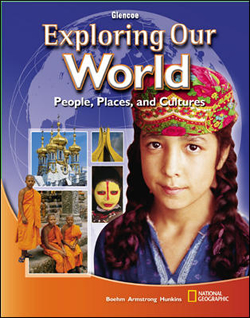
Exploring Our World: People, Places, and CulturesChapter 24: South Asia TodayChapter OverviewsSouth Asia is home to nearly 25 percent of the world’s people. Its largest country, India, is also the world’s most populous democracy. It is a vast country with a very diverse population, though the majority of its people are Hindu. India also has a stable government and a growing economy. Like the United States, India is a federal republic and has an elected president. However, executive power lies with the prime minister. India’s constitution is very detailed. Citizens have many rights and also certain duties, which include promoting harmony among ethnic groups. Its free market economy is growing rapidly, but because of its large population, there are not enough jobs. Agriculture is still a very important economic activity, and there are some factories and cottages industries. India’s service sector is growing rapidly. Many U.S. companies outsource work to India because of its well-educated workers and because wages there are low. India’s neighbor, Pakistan, is also one of the world’s most populous nations. Almost all of its people are Muslim, and about half are farmers. Cotton cloth and clothing are major exports, and manufacturing and service industries are also important. Pakistan’s economy is growing. However, many people are still poor. Some even leave to find work in other countries. Like India, Pakistan is a federal republic, but democracy there is more limited. Surrounded on three sides by India, Bangladesh is a densely populated country on the Bay of Bengal. Most people are poor and earn a living by farming. Rice is an important crop, and clothing is becoming a thriving industry. Bangladesh’s leaders try to stay on good terms with India and other neighboring countries. Conflict continues to be a challenge, however, in South Asia’s mountain kingdoms and island republics. Limited resources and political unrest have held back development in the mountain kingdoms of Nepal and Bhutan. In Nepal, pro-democracy groups clash with the king. In Bhutan, ethnic tensions exist, but the country is moving toward democracy. The island republics of Sri Lanka and Maldives have growing economies. Maldives islands have a large tourism industry. In Sri Lanka, ethnic and political conflict has led to civil war. |  |















